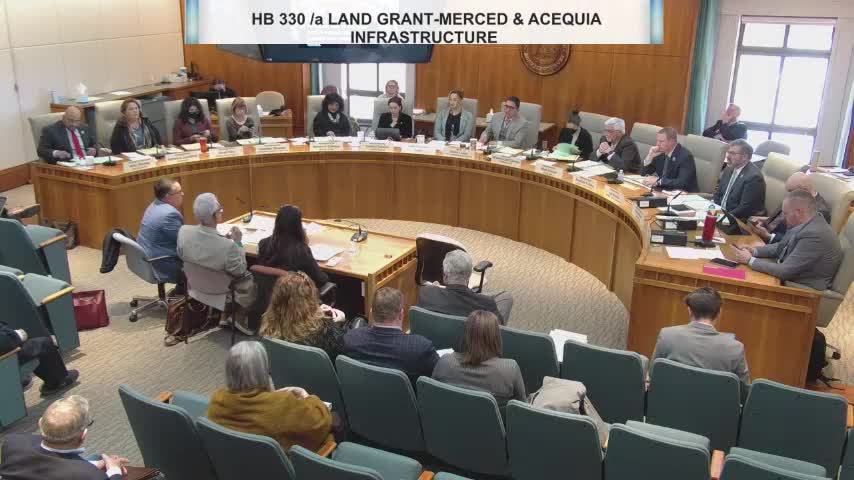New Mexico legislature discusses $40M impact on bonding capacity for infrastructure funds
March 07, 2025 | Legislative, New Mexico
This article was created by AI summarizing key points discussed. AI makes mistakes, so for full details and context, please refer to the video of the full meeting. Please report any errors so we can fix them. Report an error »

During a recent meeting of the New Mexico Legislature's House Taxation and Revenue Committee, lawmakers engaged in a critical discussion regarding the allocation of bonding capacity for infrastructure funding. The meeting, held on March 7, 2025, highlighted the complexities of balancing urgent community needs with the limitations of available financial resources.
One of the central topics was the proposed legislation aimed at redistributing bonding capacity towards new infrastructure funds, specifically for the Acequia and Land Grant infrastructure projects. Lawmakers expressed concerns about how this shift would impact the overall bonding capacity available for other essential projects across the state. Representative Joe Gooden emphasized the importance of considering the needs of various communities, suggesting that while the current proposal addresses significant needs, it may not be the most effective approach.
The committee discussed the potential fiscal implications of the proposed changes, with estimates indicating that the new legislation could reduce the current bonding capacity by approximately $35 million. This reduction raises questions about the availability of funds for traditional capital outlay projects, which are crucial for local communities.
Bridal Gray, an economist from the Legislative Finance Committee, confirmed that the proposed bill would indeed decrease the bonding capacity, stressing that these figures are subject to change based on the volatility of the oil and gas market. This uncertainty adds another layer of complexity to the decision-making process, as lawmakers must weigh immediate infrastructure needs against long-term financial stability.
As the committee continues to deliberate, the discussions underscore the ongoing challenge of addressing urgent community infrastructure needs while ensuring that funding remains available for a broad range of projects across New Mexico. The outcome of these discussions will have significant implications for local governments and the communities they serve, as they navigate the balance between immediate funding requests and the sustainable management of state resources.
One of the central topics was the proposed legislation aimed at redistributing bonding capacity towards new infrastructure funds, specifically for the Acequia and Land Grant infrastructure projects. Lawmakers expressed concerns about how this shift would impact the overall bonding capacity available for other essential projects across the state. Representative Joe Gooden emphasized the importance of considering the needs of various communities, suggesting that while the current proposal addresses significant needs, it may not be the most effective approach.
The committee discussed the potential fiscal implications of the proposed changes, with estimates indicating that the new legislation could reduce the current bonding capacity by approximately $35 million. This reduction raises questions about the availability of funds for traditional capital outlay projects, which are crucial for local communities.
Bridal Gray, an economist from the Legislative Finance Committee, confirmed that the proposed bill would indeed decrease the bonding capacity, stressing that these figures are subject to change based on the volatility of the oil and gas market. This uncertainty adds another layer of complexity to the decision-making process, as lawmakers must weigh immediate infrastructure needs against long-term financial stability.
As the committee continues to deliberate, the discussions underscore the ongoing challenge of addressing urgent community infrastructure needs while ensuring that funding remains available for a broad range of projects across New Mexico. The outcome of these discussions will have significant implications for local governments and the communities they serve, as they navigate the balance between immediate funding requests and the sustainable management of state resources.
View full meeting
This article is based on a recent meeting—watch the full video and explore the complete transcript for deeper insights into the discussion.
View full meeting
